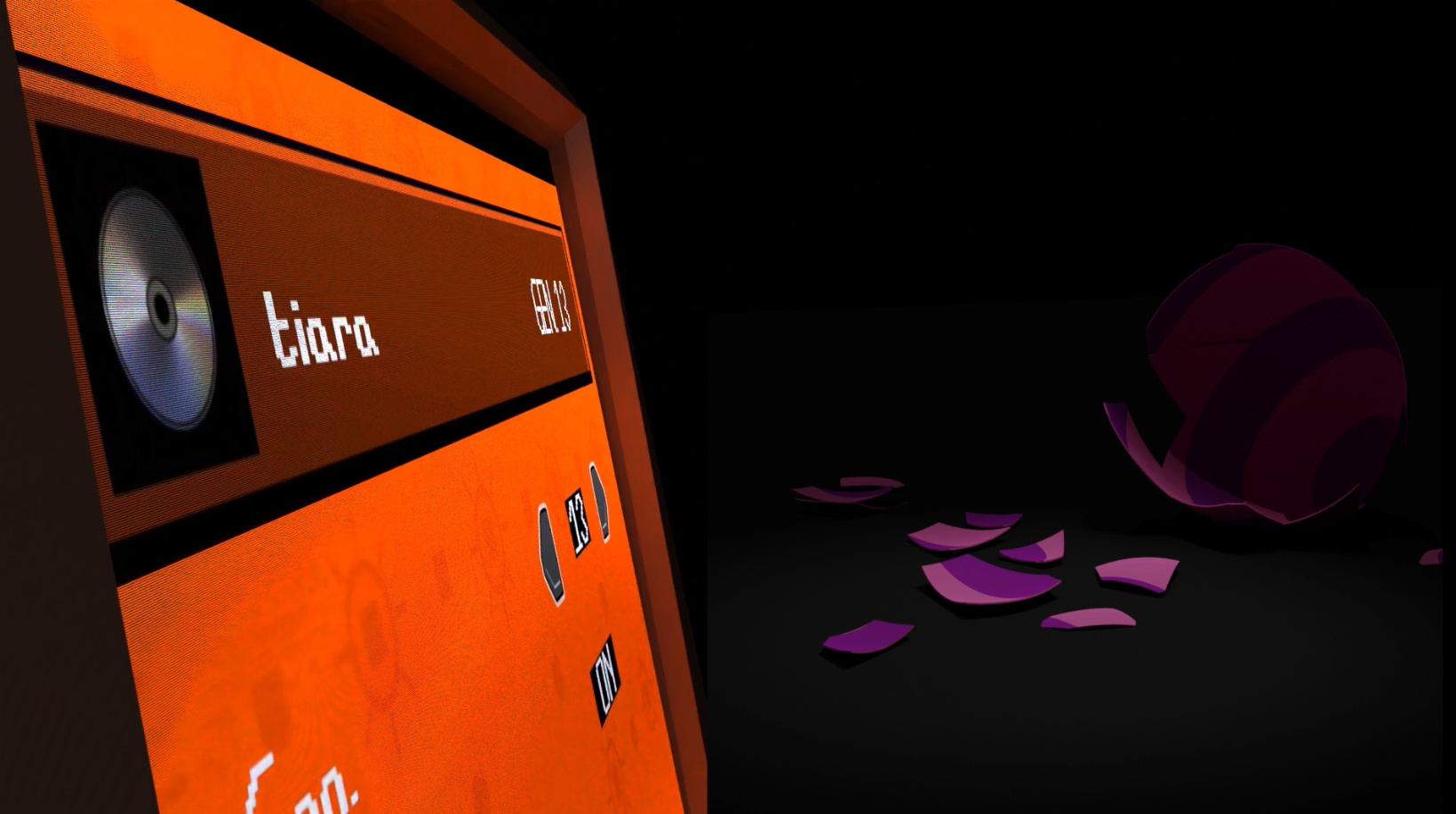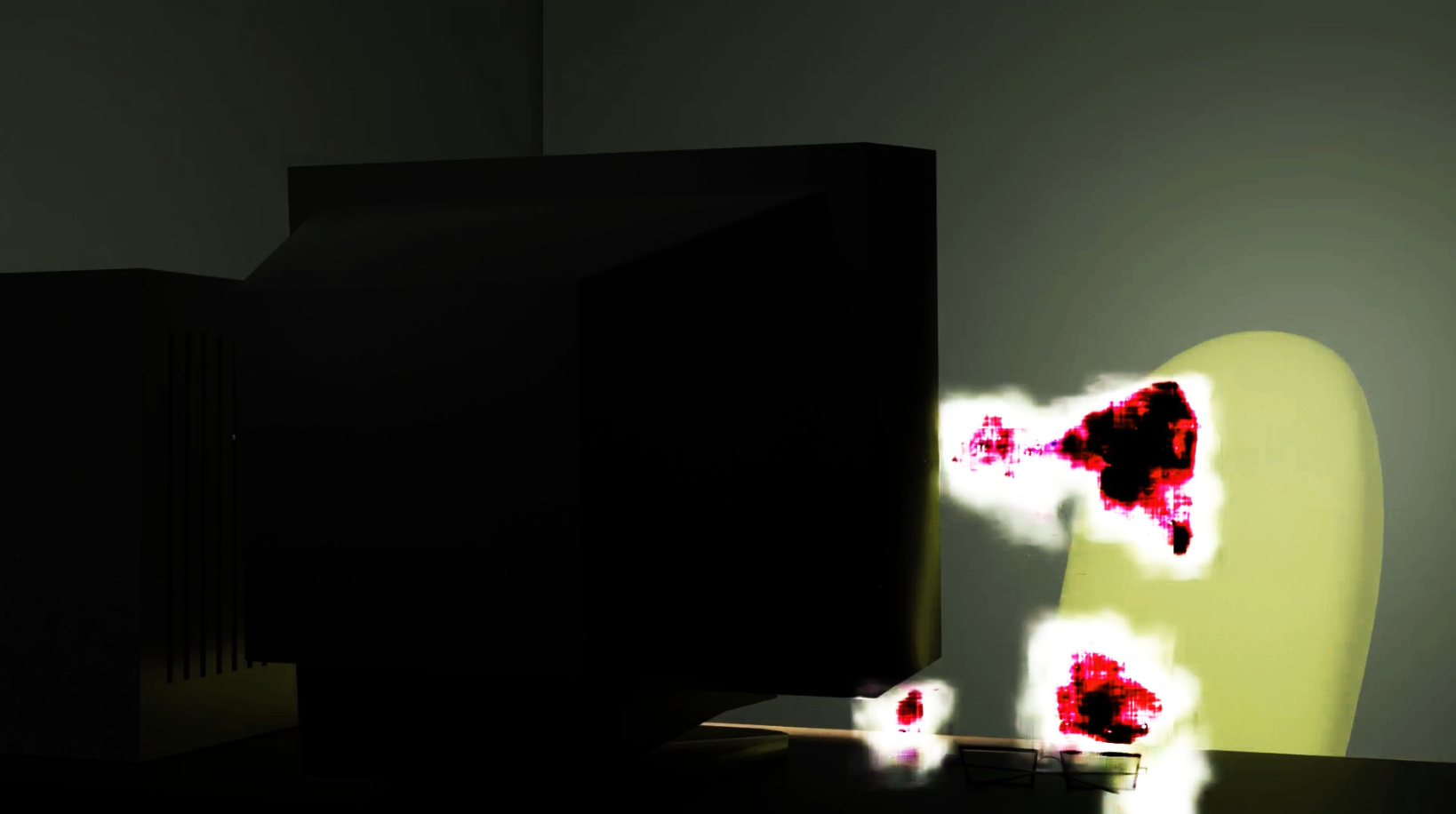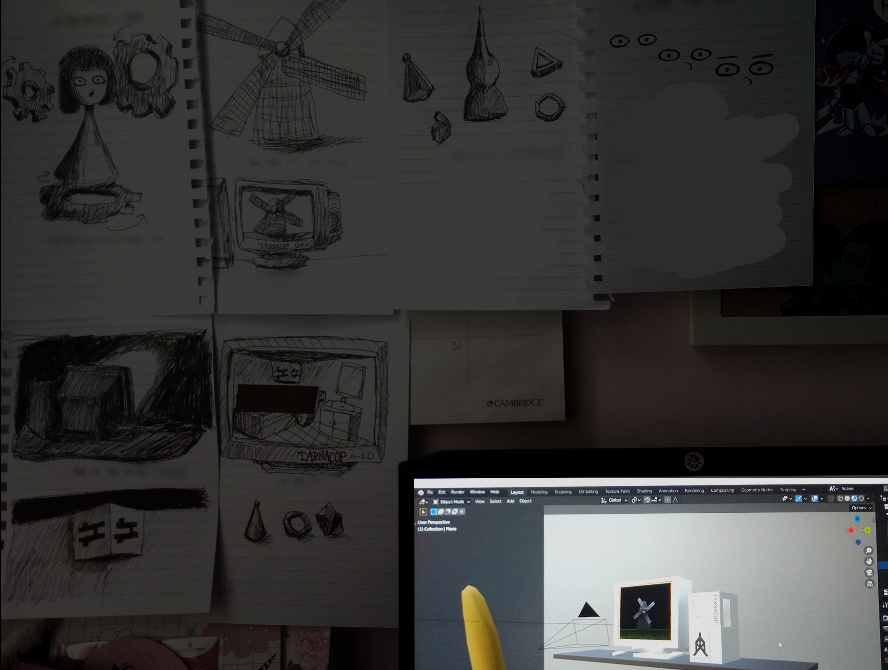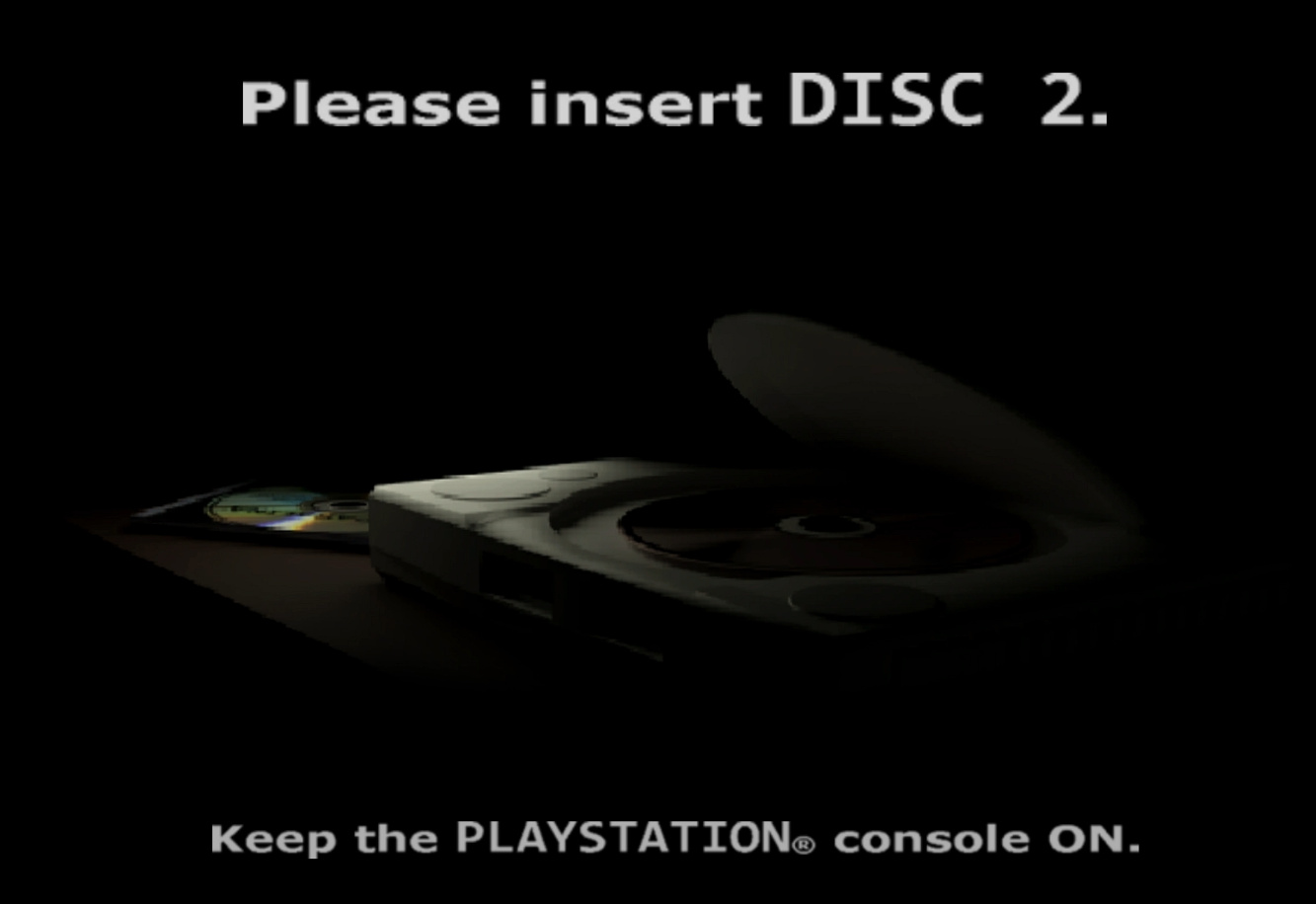I mainly used 2D images and video clips to portray Petscop's characters (and the game itself), but I had a few other fun uses for them. The pieces of paper around Rainer's desk are definitely my favorite, because those pictures are photos of actual pieces of paper I had hanging around my own desk! When I was first struck with inspiration for the video, I needed to scribble my ideas down as fast as possible. I put them on paper because the sequences were simple enough to draw, and paper is physical enough to hang above my computer and easily glance up at. The only idea I didn't draw out was the one where crude, somewhat strange planning papers are hung all around Rainer's desk. Because I didn't need to! Because it was literally right in front of me.
To me, Rainer is the most interesting character in Petscop, and one of my favorite characters ever. I'm not going to pretend that I don't see pieces of myself reflected in him, because I do, which is part of why I find him so compelling. I put up all those storyboard sketches, took a step back to admire what I had planned, and that single step of distance was all I needed to see something so stupidly on-the-nose that I just burst out laughing. Rainer himself was the one who wove Petscop's narrative, the same narrative that compelled me enough to iterate upon. I wanted to impart the idea of a character who is creating something—very closely, very carefully—and planning each piece of a far-off apotheosis, until he finally brings it to fruition. Of course his plans would include parts of the video itself!
I also wanted to impart the image of Rainer that exists in my mind, and I thought including that little bit of reality might help convey it, at least on some ambiguous level. I wanted to show someone who spent hours hunched over his desk, poring over his own unparseable creations. Someone who slaved away in furious isolation, illuminated only by the glow of a bright, burning computer screen. Someone who was slightly sweaty the entire time because his CPU was on the verge of spontaneous combustion, and the room was at least one degree too hot because of it. Someone who saw into a mirror and thought it looked a little too clear for his liking. Someone who couldn't say anything without it becoming some kind of stupid extended metaphor. I'm fuming with rage right now by the way.
Reflections inside reflections inside reflections, inside a million more individual imperceptible reflections.
![]() NOTE: VIDEO CONTAINS FLASHING LIGHTS ] ! ]
NOTE: VIDEO CONTAINS FLASHING LIGHTS ] ! ]








